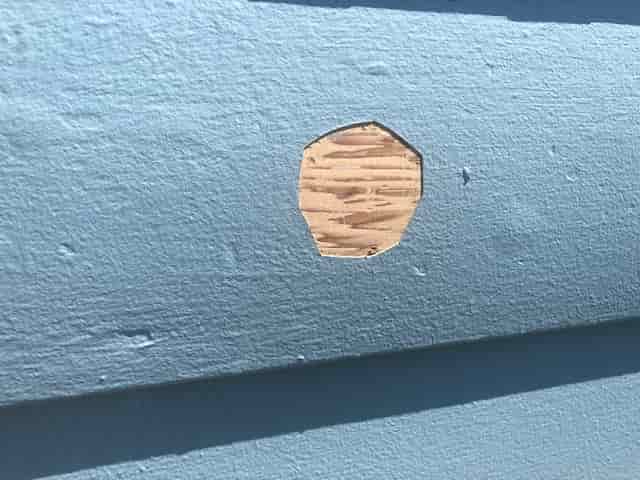There are a few reasons you may get a blister on a new or newer exterior paint job. One reason is if the paint is applied within the dew point. You have probably heard a weather man mention the dew point and wondered what the heck is that or “why do I care about that”? The dew point is the temperature at which the moisture in the air will condense on a surface. Like moisture on the side of a cold beer glass. If you paint within the dew point the paint can’t adhere to the painted surface because of that moisture so it cures to itself. It’s just hanging there and will eventually form a bubble or bubbles.
This is easy to avoid. Paint only when the exterior temperatures are many degrees above the dew point and not expected to drop into or below the dew point until the paint has had a chance to cure. This type of failure is common when exterior painting is done in the fall or early spring and the painter isn’t monitoring the weather. If the painting is done in the fall you may not see the failure until next year in the spring or summer.
The “dreaded paint blister” as I like to call them is when the blister is formed because the original coating fails after a new coat of paint is applied over it. Normally there are many older coats of paint and it is on a older home with cedar or redwood lap siding.


There is no way to foresee this type of failure. These homes often pass through power washing without the paint coming off and there is no magic coating or primer to put on the home prior to painting to prevent this from happening. You just have to deal with it after the fact and here is how.
- Cut out the bubbles.
- Prime the area with an alkyd primer. I like XIM 400 white.
- After the primer has dried. I wait 24 hours. Skim over the area with a quality exterior spackle. I like MH Ready Patch.
- Sand the areas smooth and reapply more spackle if necessary.
- Prime again with the alkyd primer.
- Paint the areas again.
I will paint the patched areas after they have been primed and then repaint that side of the house again so it has good coverage and blends in well.
The “dreaded paint blister” is one of the last things I want to discover on a project. They can become very time consuming when fixed correctly.


